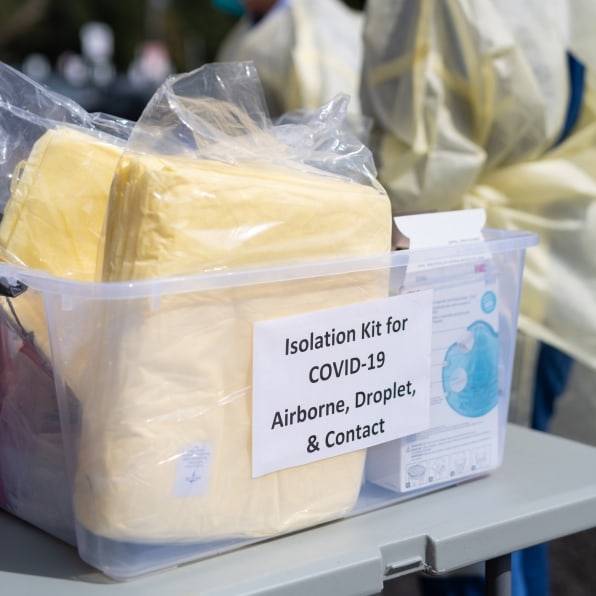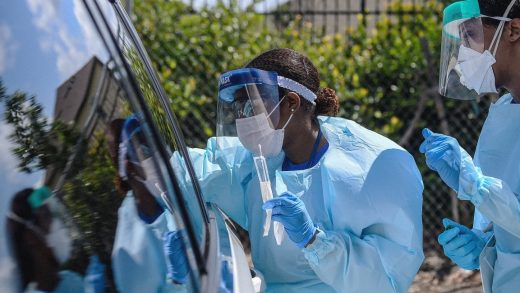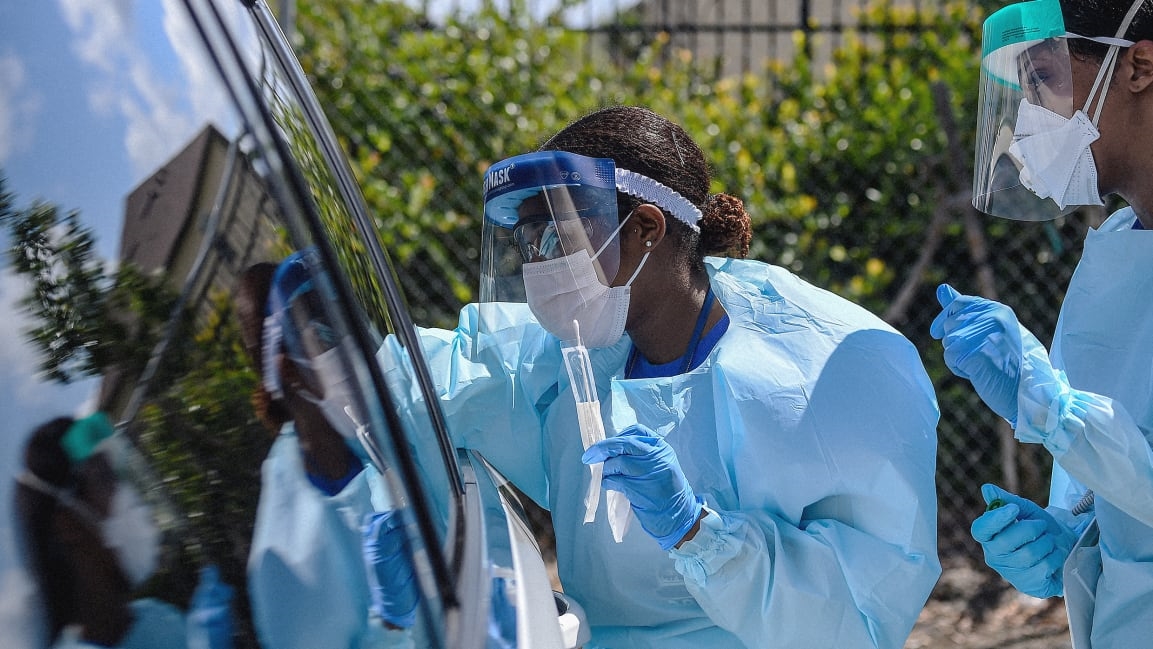Why drive-through testing is such an important tool in the coronavirus fight
Drive-through coronavirus testing is popping up across the U.S., and other countries affected by the coronavirus pandemic have already been deploying this tool for weeks. South Korea has been operating drive-through testing facilities since February; there, the speedy clinics have helped Korean health officials conduct up to 15,000 tests a day, and this way of testing is credited with helping slow the spread of COVID-19 and reducing deaths. Drive-through testing alone won’t rid us of COVID-19, but it’s an important step toward curbing the pandemic, for multiple reasons.
Streamlining the testing process
The drive-through testing process should start—at least at Stanford Medicine, which launched drive-through coronavirus testing this week—with a call from the patient, by which health workers can screen their situation. “We don’t want people to waste time coming up here if they don’t need to be tested,” says Yvonne Maldonado, an infectious disease epidemiologist at Stanford University School of Medicine. That’s especially important in the U.S., where test kits are still limited, and so health workers are generally only testing those with symptoms.

Once someone is told to come by for a test, they’ll sign up online, then drive to Stanford and pull into a parking lot on the campus. A nurse or physician will come up to their window, take their vitals, and swab their nasal cavity. “The workforce is much more nimble when you’re in a drive-through setting,” Maldonado says, “because you can have a few nurses or medical assistants taking information in an assembly line fashion and then just lining patients up and then going up to their cars and taking the swabs or whatever it is that needs to be done.”
Instead of waiting for reception to do patient intake and waiting for the patient to fill out paperwork and waiting for a nurse to come to your room, people are usually in and out of testing facilities in about 10 minutes, which helps both the health centers and the patients. Those who go to the Stanford drive-through testing facility will be informed of their results in 24 hours, often either by phone or the Stanford Health app.
Keeping other patients and health workers safe
If someone is positive for COVID-19, they could infect other, potentially healthy people who are also at a hospital or in a waiting room—either waiting for their own test or there for some unrelated medical reason. “When they’re in their car they are not exposing other people to whatever infection they might have, so that’s a real plus,” Maldonado says.

When conducting drive-through tests, nurses and physicians are decked out in PPE—personal protective equipment: masks, gowns, and gloves. Hospitals have had a hard time lately getting this equipment, partly because supply chains in China have been disrupted by the coronavirus pandemic and partly because there’s been a rush on medical supplies such as masks and gloves. “Instead of having a lot of different healthcare workers in the emergency department wearing a lot of these masks, gowns, and gloves, you have the ones who are working in the line doing it, and there’s a lot less of them doing it,” Maldonado says. “You’re conserving resources that can be used in the hospital for all of the other sick patients that we need to take care of.”
Another key aspect of drive-through testing is that it removes the coronavirus-related work from the emergency department, so that department can keep operating as normal without being overloaded by potential COVID-19 patients. “It keeps the emergency department free for other diseases and injuries and traumas and all the other problems we have that come through,” she says.
Being able to test a lot of people quickly
The in-and-out nature of a drive-through coronavirus test means more patients can be tested in a shorter period of time. In the best of all possible worlds, you would want to test as many people as possible, Maldonado says, so they could take precautions. Right now, the U.S. doesn’t have enough tests to do that, but confirming as many cases of COVID-19 as we can is still important. “If you get a test, you need to know what you’re going to do with the results,” she says. “Given that we don’t have any real, direct treatments for this disease . . . if we knew somebody was infected with this virus, then we would keep them at home and try to keep them from infecting other people.” Knowing they have COVID-19 would also better equip a patient to know the best time to go to the hospital and not potentially overcrowd and overburden a facility.
If someone gets a drive-through coronavirus test and finds out they don’t have COVID-19, that would reassure them they aren’t transmitting this to other people. “That being said,” she adds, “a test is only as good as that moment that you take it. So for example, it doesn’t mean that tomorrow or the next day that person might not be exposed to somebody and then get infected.” Practicing social distancing, whether you currently have COVID-19 or not, is still crucial to reducing the risk of transmission.
But what about people who don’t have cars?
Drive-through testing, obviously, benefits those with vehicles, but Maldonado says Stanford’s drive-through coronavirus testing is still accessible to walk-ups, because there are tents set up in the parking lot that patients can enter, and Stanford’s campus is accessible by train and bus. In other dense urban areas, medical professionals can set up pop-up clinics that people can walk to. A car does offer some protection against exposure, but as long as medical workers are informed ahead of time so that they can be prepared against the spread of coronavirus, they can have the right precautions in place. Pop-up facilities could also alleviate the rush of COVID-19 patients, or those who just want a coronavirus test, into hospital waiting rooms and emergency departments.
Back in 2009, Stanford Hospital was the first in the nation to conduct a drive-through pandemic exercise during the swine flu outbreak. During the H1N1 outbreak, it never got to the point where they had to implement the protocol again, though Maldonado says they did set up general tent testing outside of the hospital, which helped with the influx of patients. That exercise was just part of how hospitals such as Stanford are always thinking about surge capacity. “We do those assessments all the time,” she says. “We have learned that we can’t just wait for things to happen to us—we need to try to look ahead and predict what might happen.”
The coronavirus pandemic is unpredictable, but testing—especially testing that is efficient and easy, as with drive-through facilities—helps bring some of those unpredictabilities and unknowns into focus. Drive-through testing shouldn’t always be the go-to, because it can be difficult to set up, Maldonado says. “But in an event like this where we’re seeing major disruptions and lots of people who are truly ill or who are worried they might be ill, or who have nonspecific symptoms of something brand new like COVID-19, it’s probably best to send them through a drive-through center,” she says.
(21)



